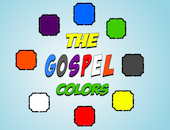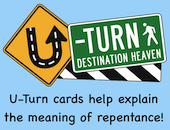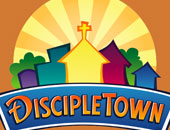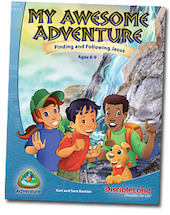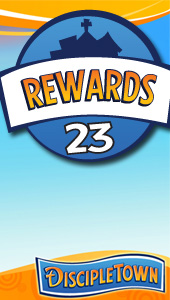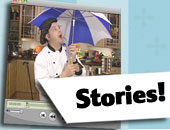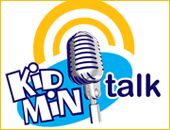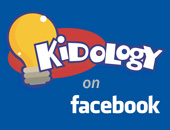Robert Munch 17:17 - Teaching Bible Skills - The Reference
Membership Level› Guest
Author/Source: Janelle Hoos
Topic: Bible References
Steps for teaching your kids how to use the Bible--by Book, Chapter and Verse.
“At bedtime I was sharing with Nicholas about what true friendship is. I ended by saying: “The bible says that a friend loves at all times!” Nicholas exclaimed “I know, Robert Munch 17:17!” “What?” I asked for clarification. He explained “Robert Munch 17:17! That’s the bible verse that says that a friend loves at all times.” Later I checked. Sure enough, the verse is found in Proverbs 17:17. Or as the cool kids call it: Robert Munch 17:17.”
 To a 5 year old, Robert Munch 17:17 makes just about as much sense as Proverbs 17:17. The books of the Bible are for the most part unfamiliar words for kids – Leviticus, Obadiah, Ecclesiastes, Thessalonians, and Philemon are just a few examples. The books of the Bible are just one part of the reference though.
To a 5 year old, Robert Munch 17:17 makes just about as much sense as Proverbs 17:17. The books of the Bible are for the most part unfamiliar words for kids – Leviticus, Obadiah, Ecclesiastes, Thessalonians, and Philemon are just a few examples. The books of the Bible are just one part of the reference though.
The reference itself is an unfamiliar concept for kids. The Bible is the only book that is set up with books, chapters, and verses and the Bible is the only book that uses references as a means of locating information within a book.
When teaching Bible skills, one of your biggest jobs is to take what is unfamiliar and make it familiar.
Start With What Kids are Familiar With
Start with what kids are familiar with – chapter books. Kids understand that a book has a name and chapters. Show kids a chapter book and ask them to show you the title of the book and a chapter in the book. During this activity, ask the children to tell you what a book is and what a chapter is.
Once it is clear that all of the students understand what a book and a chapter is, show them a Bible. Ask them how the Bible is different from the chapter book you showed them. (It is a library of books.)
A Library of Books!
The first step to understanding a reference is to understand that the Bible is one book and a library of books! The Bible is one book that holds 66 different books. That is a lot! With so many books in one place, there needs to be a way to organize everything so that information can be found.
Each of the books in the Bible has its own name. Ask your students to show you a book in the Bible. Most Bibles have an introductory page for each book. (This may be the page a student shows you). This introductory page is one of the ways the Bible is organized. Each book also has the name at the top of the page for each page in the book. (Some students may show you a page within the book with the title at the top.)
Give kids lots of opportunities to practice finding books in the Bible. Remind them often that if they are lost, they can check the top of the page to find what book they are currently in.
The Chapter
Each book is divided into chapters. Show your students the chapter book again. In chapter books, the chapter is given a title and/or a number. Tell them that the way the Bible is organized; chapters are given numbers, starting with one. Ask your students to turn to a book in the Bible (different books are encouraged for this activity). Ask them to flip through the book to find out how many chapters are in that book. Some books of the Bible are short with only one chapter; others are very long with over 100 chapters (like the book of Psalms). Ask them to tell how to tell a chapter in the book. (Each chapter is given a big number.)
The Verse
The Bible is a library of books that are divided into chapters. Those chapters are further divided into verses. A verse is designated by a small number at the beginning of the verse. Ask your students to find the book of Genesis chapter one. Once all of your students have found Genesis chapter one, ask them to show you verse 1. This is trickier than it sounds because not all Bibles show the number 1 for the first verse in a chapter (this could be because the chapter number is there also). Once your class has identified the first verse in chapter one, ask them to find verses 2-10. Ask, “Are the verse numbers always at the outer edge of the page/column?” (No, they are scattered throughout the text.)
Ask the students to find a specific verse and read it. Then, ask the students to find a group of verses (ex. Verses 3-5) and read them out loud. I remember one student in grade four who was asked to read a short passage of Scripture. She read the verse number along with the text. Don’t forget that it’s our job to teach our students what a verse is, what its purpose is, and whether or not the verse number is read along with the text.
The Reference
Now students are ready to put it all together and learn what a reference is. One good way to explain a reference is to call it an address. The address tells us where a specific piece of information lives in the Bible. The address will tell us what book the information is in; what chapter the information is in once we have reached the book; and what verse the information is in once we have found the chapter within the book.
Write out a reference for your students:
John 1:1
When explaining the reference (book, chapter, verse), don’t forget to tell your students what the colon is for. The colon separates the chapter from the verse.
When students are familiar with a reference and comfortable using and writing them, it’s time to move on to more complex references.
1 John 1:1
In this reference there is an additional number at the beginning of the reference. Teach your students that certain books of the Bible have these numbers in them. When they see a book like that (1 Kings, 2 Timothy, etc) it is read “first” rather than “one”... or “second” rather than “two”... or “third” rather than “three”
John 1:1a
In this reference there is a letter at the end of the reference. Tell your students that because it comes after the colon it is related to the verse. Verses can be divided up into the first part of the verse and the last part of the verse. When they are just supposed to read the first part of the verse, an “a” will be added to the verse in a reference. When they are supposed to read only the last part of a verse, a “b” will be added to the verse in the reference.
Give your students lots of opportunity to practice this. The use of letters in a reference is not a clear cut skill. Verses are never divided exactly into half. Students need practice to see how a verse could be divided and what the person who wrote the reference what asking them to focus on.
John 1:1a could be “In the beginning was the Word.”
John 1:1b could be “and the Word was God,” or “the Word was with God, and the Word was God.”
John 1:1, 14
This reference contains two verses. It could also be written like this – John 1:1&14. The “and” and the comma perform the same function. They show the reader that only verse one and verse fourteen are to be read. Tell your students that when they see a comma they should think ‘and.’ In this case, verses one and fourteen. Let your students practice this new skill as well. Give them a variety of references with commas to look up.
John 1:1-14
This reference contains a dash. Tell your students that when they see a dash that means to read all the verses between the verses shown. (Make sure you let them know that it includes the verses shown as well!) So, in our example, students would read verses 1,2,3,4,5,6,7,8,9,10,11,12,13, and 14.
John 1:1-14, 17
This reference contains a combination of the comma and the dash. Ask your students if they can tell you what it means. They would read verses one though fourteen, and then verse seventeen.
Practice until Familiarity is Developed
I would not recommend doing all these activities in the same sitting. There are a lot of skills being taught here. Rather, let the students practice one skill at a time. When they are comfortable and familiar with that aspect of the reference, then it’s time to move on to the next activity.
Even when your students are ready to move on to a more complex reference, they still can benefit from practicing the skills they have learned already.
Teach your students what a reference is and how it can be used to find specific information in the Bible. Never assume your class knows what a reference is, no matter how old they are. Children in grade 5 may not understand correctly how a reference is designed or used if they have never been taught.





